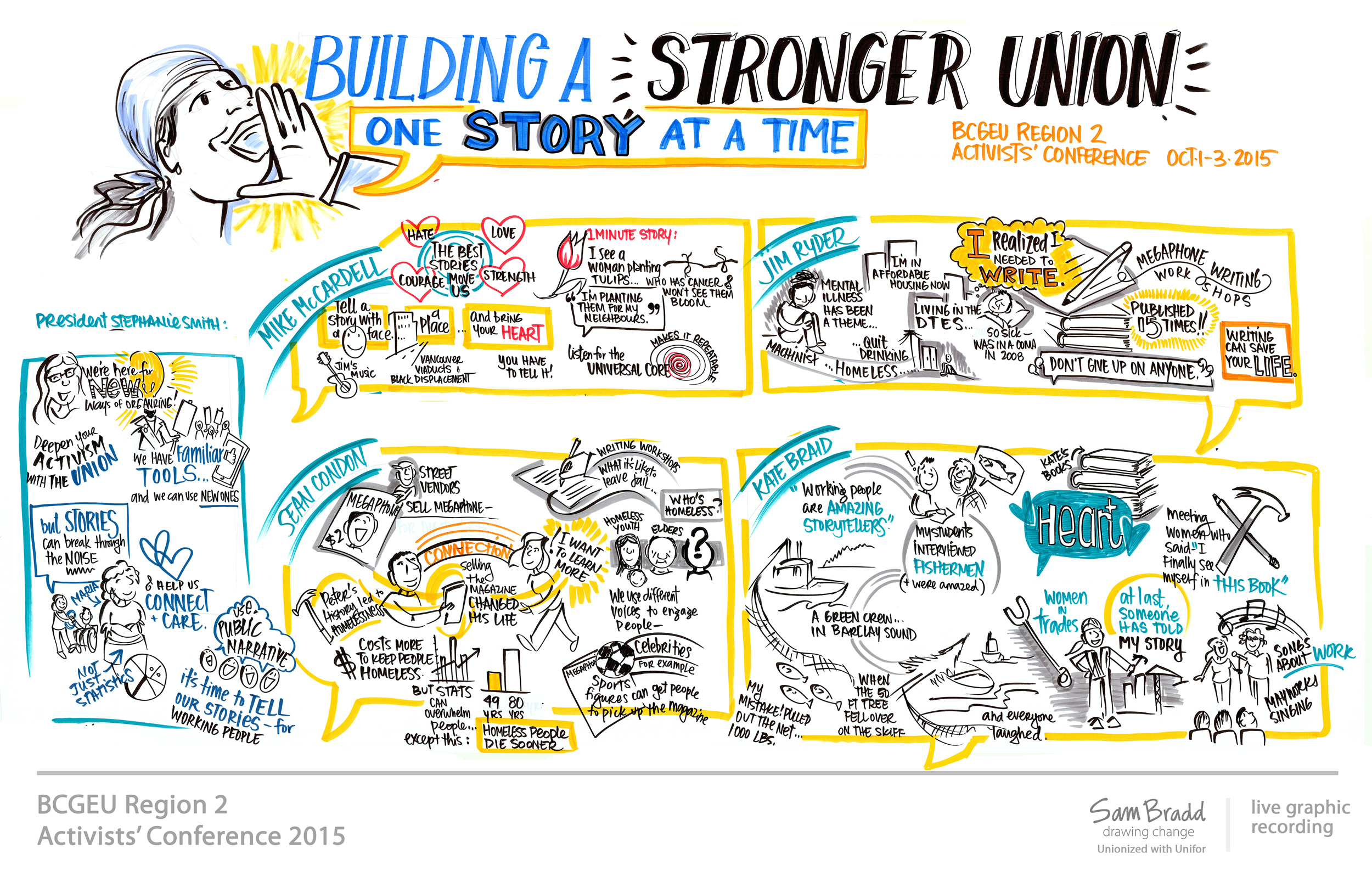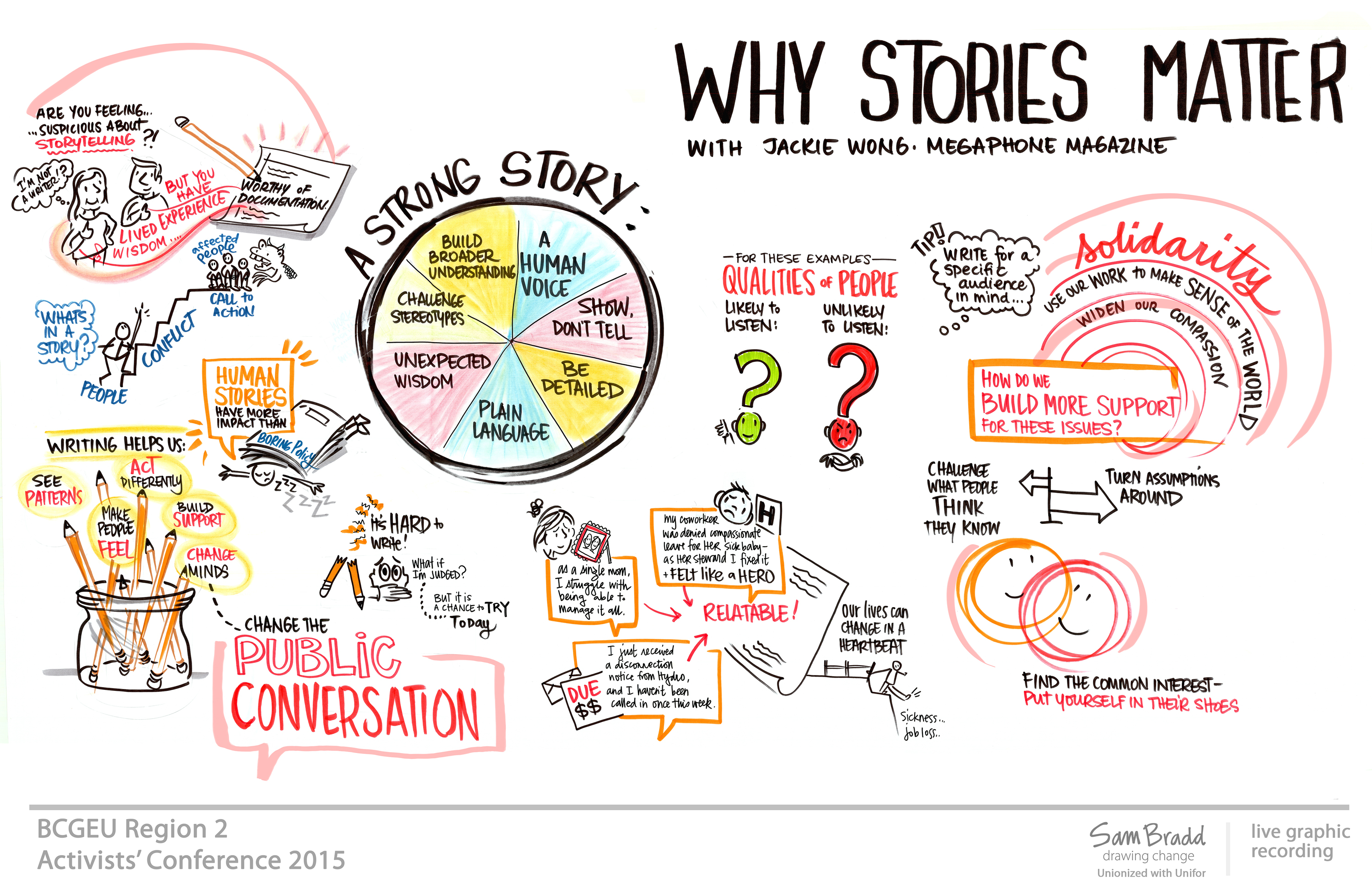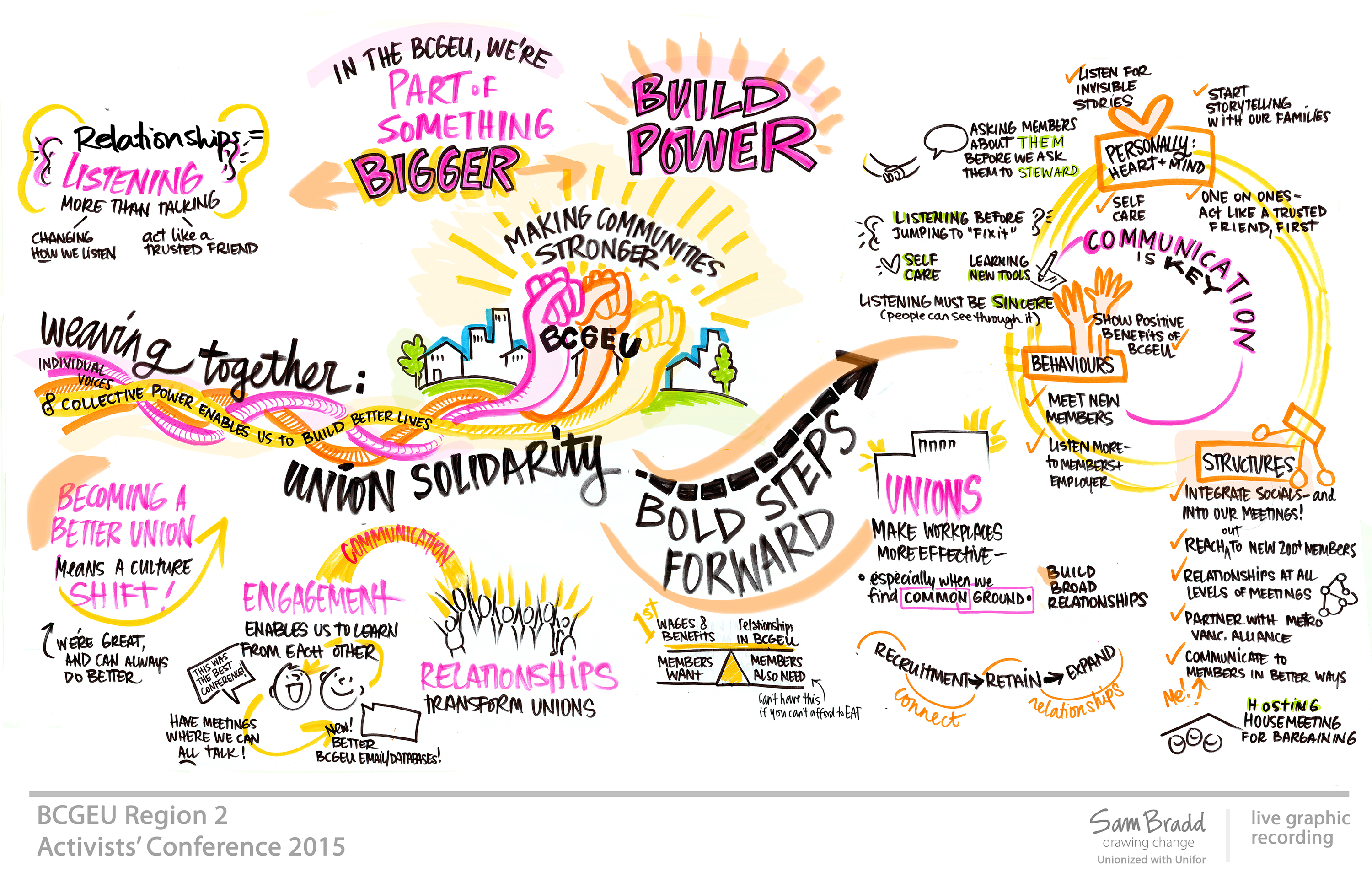Visual Storytelling: Finding Common Ground
The next time someone asks what storytelling has to do with unions, you can tell them it builds better, stronger labour activists.
These graphic recording images were created live at the BCGEU conference on storytelling, “Building a stronger labour movement, one story at a time”. The workshops were led by Deborah Littman of the Metro Vancouver Alliance, and Jackie Wong of Megaphone Magazine. It was great to bring visual storytelling to this event. You can review these images to see the stories people told, and also learn the structure and tips on creating your own stories.
 The labour movement was built on storytelling.
The labour movement was built on storytelling.
In the past, members worked together to tell stories about what happened at work. The ideas of fair wages, worker safety, health benefits and a standard work day were first spread through word of mouth – slowly changing workers into members, and members into a strong labour movement. Today, unions have new challenges. Building power means getting back to story telling. Unions were built by sharing ideas and common experiences, and stories are at the core.
These graphic recording images show a variety of tools.
Reciprocal listening, changing the public story, writing your own story, and house meetings. It all connects to the Story of Self tool by Marshall Ganz: Digging for the story of self, then connecting it to the story of us and then moving it to the now.
The first image (above) has five different stories: Mike McCardell tells us the best stories move us, and BCGEU President Stephanie Smith reminds us that stories can break through the noise.

Jackie Wong from Megaphone Magazine led the workshop “Why Stories Matter”. The “A Strong Story” wheel has key segments of a strong story: the human voice, creating the experience by showing, giving details, getting away from technical or insider speak, unexpected wisdom in small places, challenging stereotypes and building a broader understanding. These elements work together to make a connection.
Connecting the Dots for our Working Lives
Connecting the dots shows the intersections we live everyday. In the above image, we broke down the connections between home and work. Work and home might seem like different spaces, but the qualities that make us “Us” are found in both spaces. These are stories about our working lives.
Telling Deeper Stories

Listen, Discern, Plan, Act and Evaluate
Stories aren’t all the same. Finding common ground can seem impossible. But there are tools to help. The story of a single mother fighting for childcare in her workplace is not the story of a miner in the North fighting for health care to cover the cost of nickel rash ointment.

But of course, what is a storyteller without a listener? The labour movement is a strong and large force – just like any large organization or movement – and people need to stay connected to the broader goals. The simple action of listening is the building blocks of solidarity. It is the most fundamental step of taking the time to listen, hear that members lived experiences and work together to find how it relates to the “us” and the “now”.
Listening to members is critical. Reciprocal listening, as taught by Metro Vancouver Alliance and described in the graphic above, is a fantastic tool. Listen, Discern, Plan, Act and Evaluate. We all need to feel heard. We all need our voices to matter and our experiences to mean something to make things better for someone else. When workers build reciprocal listening skills, they’re able to connect to people they don’t know yet, learn about their common experiences. Through visual storytelling and reciprocal listening, members can work together to find common ground and build power.
House Meetings as Tool for Listening
House meetings are an excellent way to take the pulse of the membership. Led by Metro Vancouver Alliance, this workshop shows how to move your story from the past to the present to the collective future. Map your workplace, and find out who’s missing? why? then plan a listening session. House meetings are a tool to solve problems – not just personal solutions, but group solutions. And how we engage matters: it starts with listening, the goes from Story -> Challenge -> Vision for Change.
In the wrapup session, we heard that unions need to make bold steps forward.
Unions make workplaces safer and better for workers. But union membership is dropping due to changing workforce needs. The hard fought for strength with manufacturing unions isn’t being carried over to the service industry, where precarious labour is high and workers are often exploited. But with storytelling, listening, and solving problems together – we can build relationships, find common ground, and build the power to change what’s needed.




5 comments on “Visual Storytelling: Finding Common Ground”
Hi Sam:
Nice piece, this one. I’ve facilitated several of these BCGEU conferences over the years and have nworked with (and been a member of) public sector unions.
If there is one group of unions that needs a powerful story it is this one. And connecting the story of a strong union to a strong community is essential not only for the future of the labour movement, but for the effectiveness of labour in communities, where activists with job security can make change beyond their workplaces.
Thanks for these images and reflections. This is important work.
Absolutely, Chris!
The BCGEU members do important work for communities, and it’s the connection between public services and community that’s also important. I agree that change can start in the workplace but ripples beyond… Ripples, like a rising tide floats more boats. Thanks for your note. Great meeting, finally, in person last week!
This is great stuff. Beautiful.
Thanks Paul, appreciated.